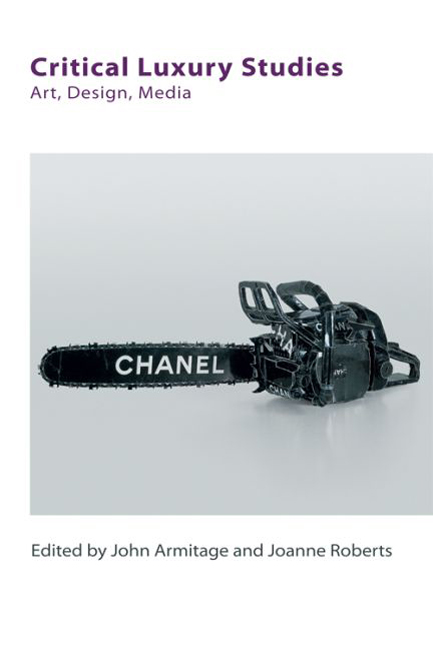Book contents
- Frontmatter
- Contents
- List of Figures
- List of Tables
- Series Editors’ Preface
- Acknowledgements
- Notes on Contributors
- 1 Critical Luxury Studies: Defining a Field
- I CRITICAL LUXURY STUDIES
- II ART, DESIGN, MEDIA
- 7 Experiments in Suchness: Hiroshi Sugimoto's Silk Shiki for Hermès
- 8 Libeskind in Las Vegas: Reflections on Architecture as a Luxury Commodity
- 9 Sartorial Connoisseurship, the T-Shirt and the Interrogation of Luxury
- 10 Online Luxury: Geographies of Production and Consumption and the Louis Vuitton Website
- Index
7 - Experiments in Suchness: Hiroshi Sugimoto's Silk Shiki for Hermès
from II - ART, DESIGN, MEDIA
Published online by Cambridge University Press: 23 September 2017
- Frontmatter
- Contents
- List of Figures
- List of Tables
- Series Editors’ Preface
- Acknowledgements
- Notes on Contributors
- 1 Critical Luxury Studies: Defining a Field
- I CRITICAL LUXURY STUDIES
- II ART, DESIGN, MEDIA
- 7 Experiments in Suchness: Hiroshi Sugimoto's Silk Shiki for Hermès
- 8 Libeskind in Las Vegas: Reflections on Architecture as a Luxury Commodity
- 9 Sartorial Connoisseurship, the T-Shirt and the Interrogation of Luxury
- 10 Online Luxury: Geographies of Production and Consumption and the Louis Vuitton Website
- Index
Summary
Collaborations between artists and luxury firms have had a long tradition that began before the Second World War and reached a peak in the last fifteen years. This is an application of a long-lived strategy implemented by luxury names throughout the twentieth century – propelled, however, by the necessity to create original products worthy of the brand's name. Despite the general consensus that this is nothing new (Cartier would have had little to show without the work of Jeanne Toussaint or Aldo Cipullo), the market's economic pressure on contemporary luxury firms to achieve growth and higher revenues has forced the practice to acquire greater dimensions. The anonymity that characterised the artistic contributions to luxury product lines has been lifted.
Today, artists achieve high levels of recognition in society, including among the non-buying masses, which, nevertheless, aspire to participate in the art world. While art objects are still wrapped in mystery and often present intellectual challenges to those without a formal training in art history, artists enjoy new levels of fame and popularity in a world that turns artists’ identity into brands. These brands are ripe for consumption even if the actual artwork is well beyond the purchasing power of the public. The masses aspire to be associated in some way with their favourite artist's brand and are willing to finance the acquisition of objects that bear the artist's signature. These objects can be anything from accessories to fashion, decorative items or electronic appliances. More often than not, they are the result of collaborations between luxury houses and contemporary artists in the form of limited editions. The proliferation of this practice, especially during the last fifteen years, raises the question of whether it has resulted in solutions that have lost their power as creative paradigms. It creates the need for a re-examination of what luxury truly is, how and why it relates to art; an assessment of the theoretical frameworks developed to evaluate the meaning, usefulness and identity of luxury; and, finally, research on artists whose work with luxury houses shifts the discussion away from commercialism and back to the nature of two important concepts that evade definition: art and luxury.
- Type
- Chapter
- Information
- Critical Luxury StudiesArt, Design, Media, pp. 131 - 150Publisher: Edinburgh University PressPrint publication year: 2016



